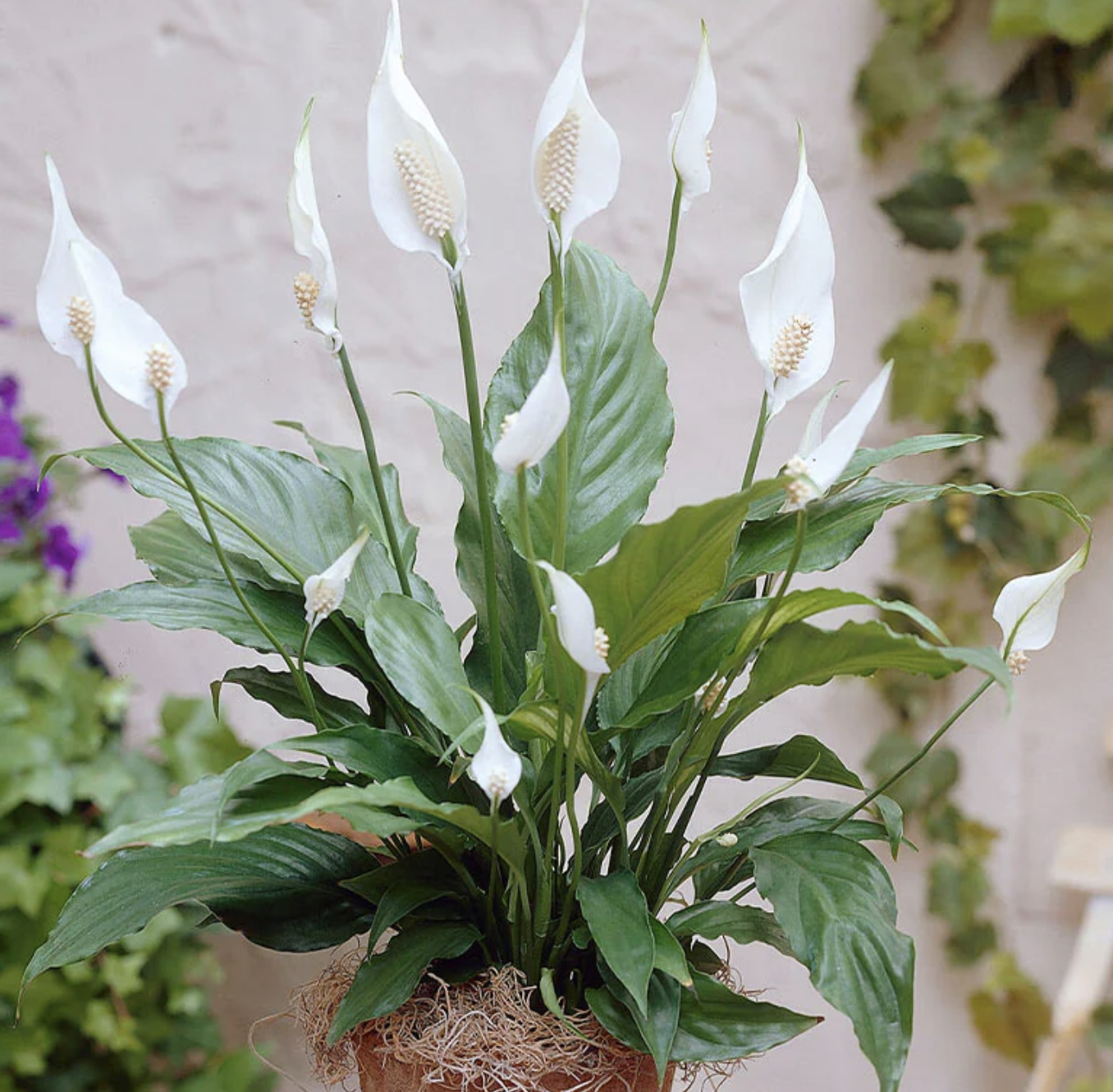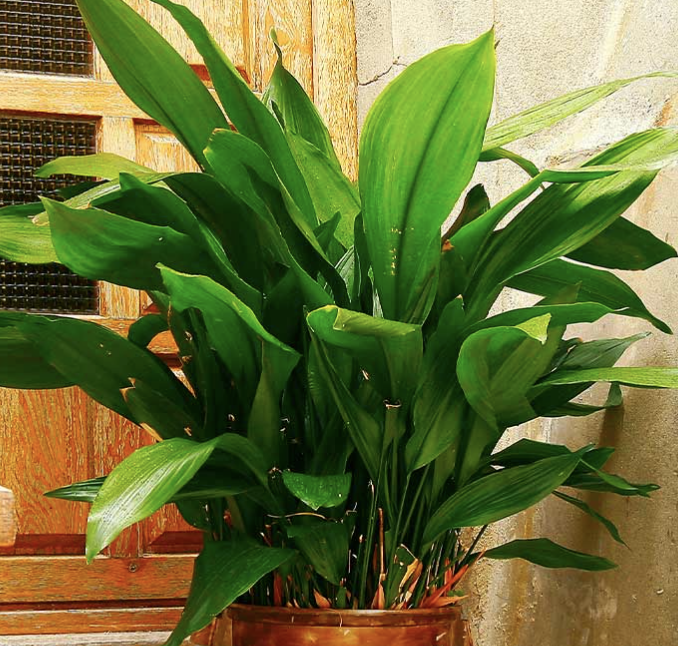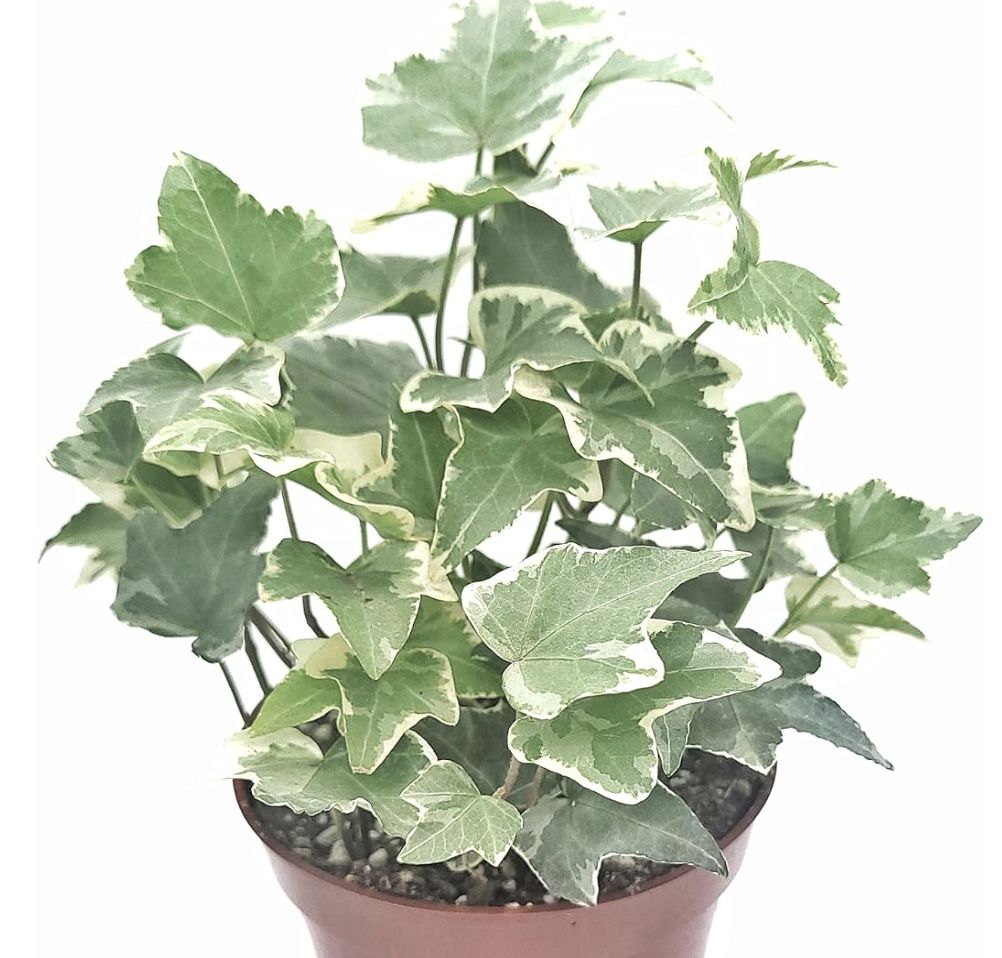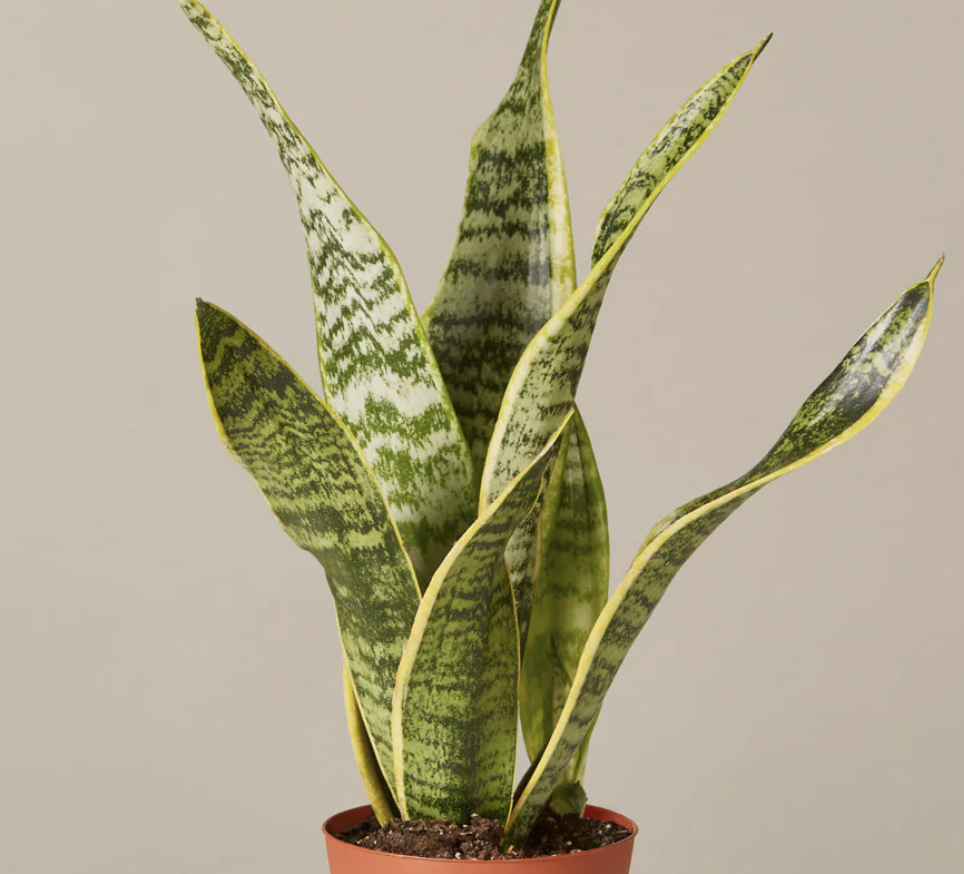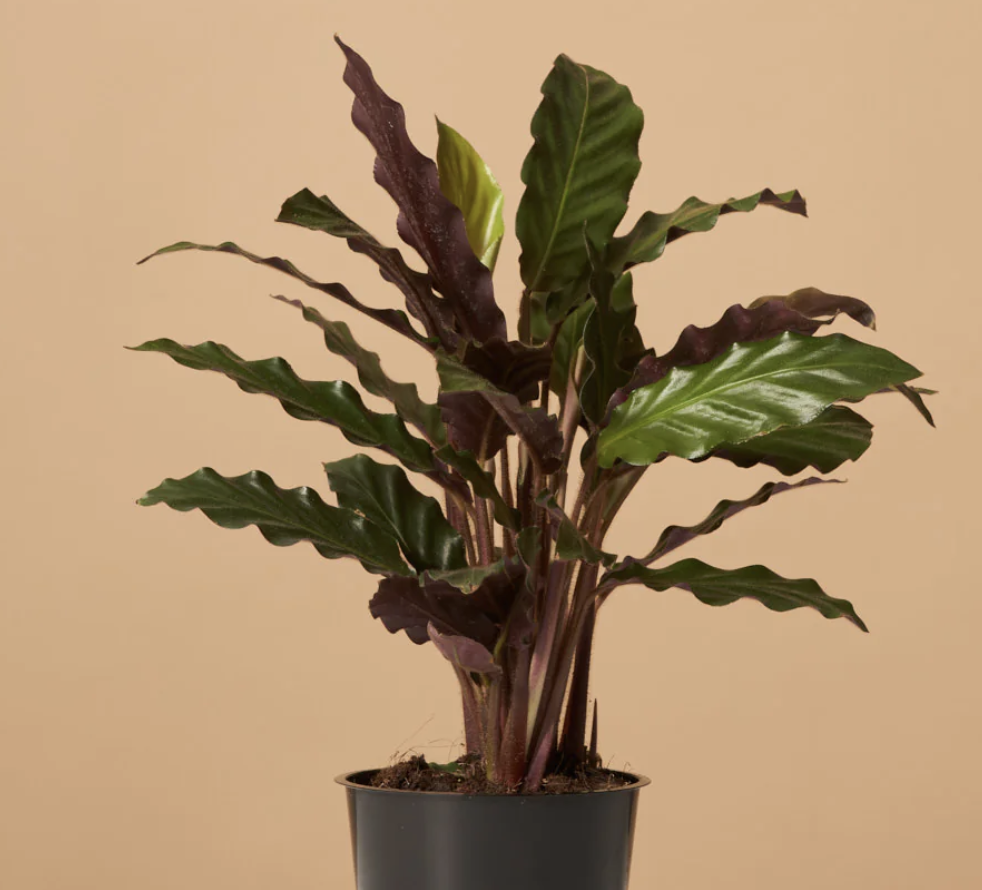'They make you hopeful and calm' - the 5 most relaxing plants for your bedroom
Garden experts pick the 5 most relaxing plants for your bedroom, that purify the air, that are luscious and low-maintenance, and that help create a serene space

Traditionally, plants have been kept out of the bedroom. This is because when they photosynthesise most plants release oxygen during the day and CO2 at night, when we sleep.
However, a smattering of green foliage can create a serene space to relax in. Some plant species will even release oxygen at night, due to the unusual way they photosynthesise. We're looking at you Snake plant. Many other indoor garden plants absorb toxins from the air too.
Being in nature, amongst plants, trees and green spaces, is calming. It's the reason biophilic design is on the rise, with architects incorporating more natural elements into the built environment. With scientists now able to measure nature's positive benefits on blood pressure and heart rates the popularity of indoor plants has soared too.
The 5 most relaxing plants for your bedroom
So which are the most relaxing plants for your bedroom? Here's what experts suggest.
1. Peace lily (Spathiphyllum)
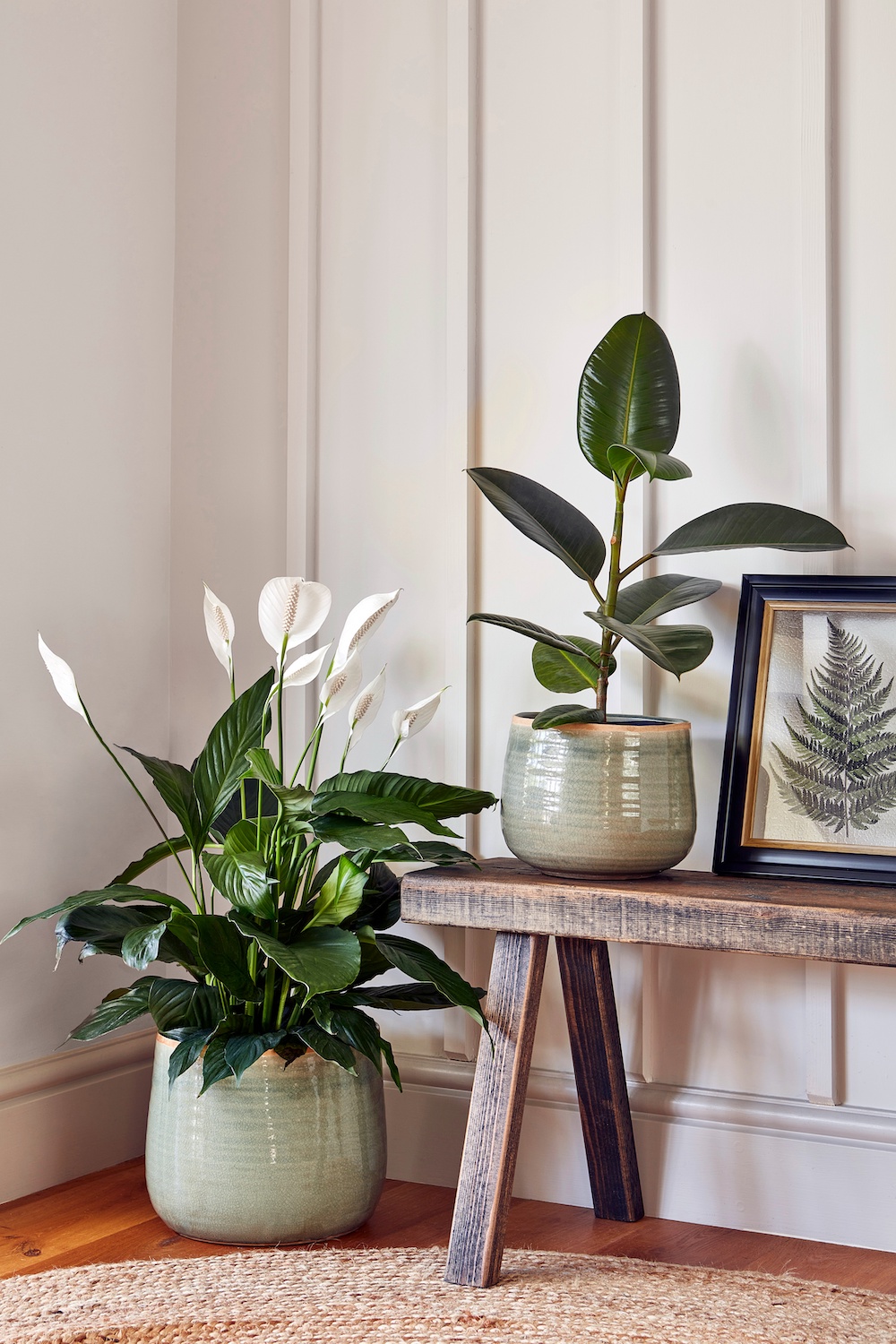
One plant associated with serenity is the Peace lily. Although not a true lily, the Peace lily gets its name for its pretty white flowers–or spathes–said to resemble white flags of peace.
This plant is also scientifically proven (by NASA) to absorb toxins, such as benzene, formaldehyde and trichloroethylene. These chemicals are released when we paint or buy new furniture or flooring, as they 'off-gas'.
'Peace lilies can remove toxins from the air, which can be harbored in common bedroom items like dressers and bed frames to linens and paints,' says Bethany Lakatos, plant expert at Fast-Growing Trees.
'As the name implies, Peace Lilies are a symbol of peace, healing, and hope. The calming energy of the peach lily is also thought in Eastern traditions to bring a centered harmony that releases conflict from the room.
'Use a standard, well-draining potting mix and place your plant in moderate to bright indirect light. Always keep the soil slightly moist but avoid overwatering. If Peace Lillies are too dry, their lives will droop in displeasure. This can be restored by a thorough application of water.
'Repot with fresh soil in early spring as needed, keeping in mind that peach lilies like to be somewhat rootbound in their pots. Fertilize with a balanced houseplant fertilizer at half strength monthly spring-fall and every 6 weeks in winter.
'Wipe the leaves regularly to keep the plant looking its best and take a glance under the leaves in the process to check for pests like mealybugs.'
2. Cast iron plant (Aspidistra)
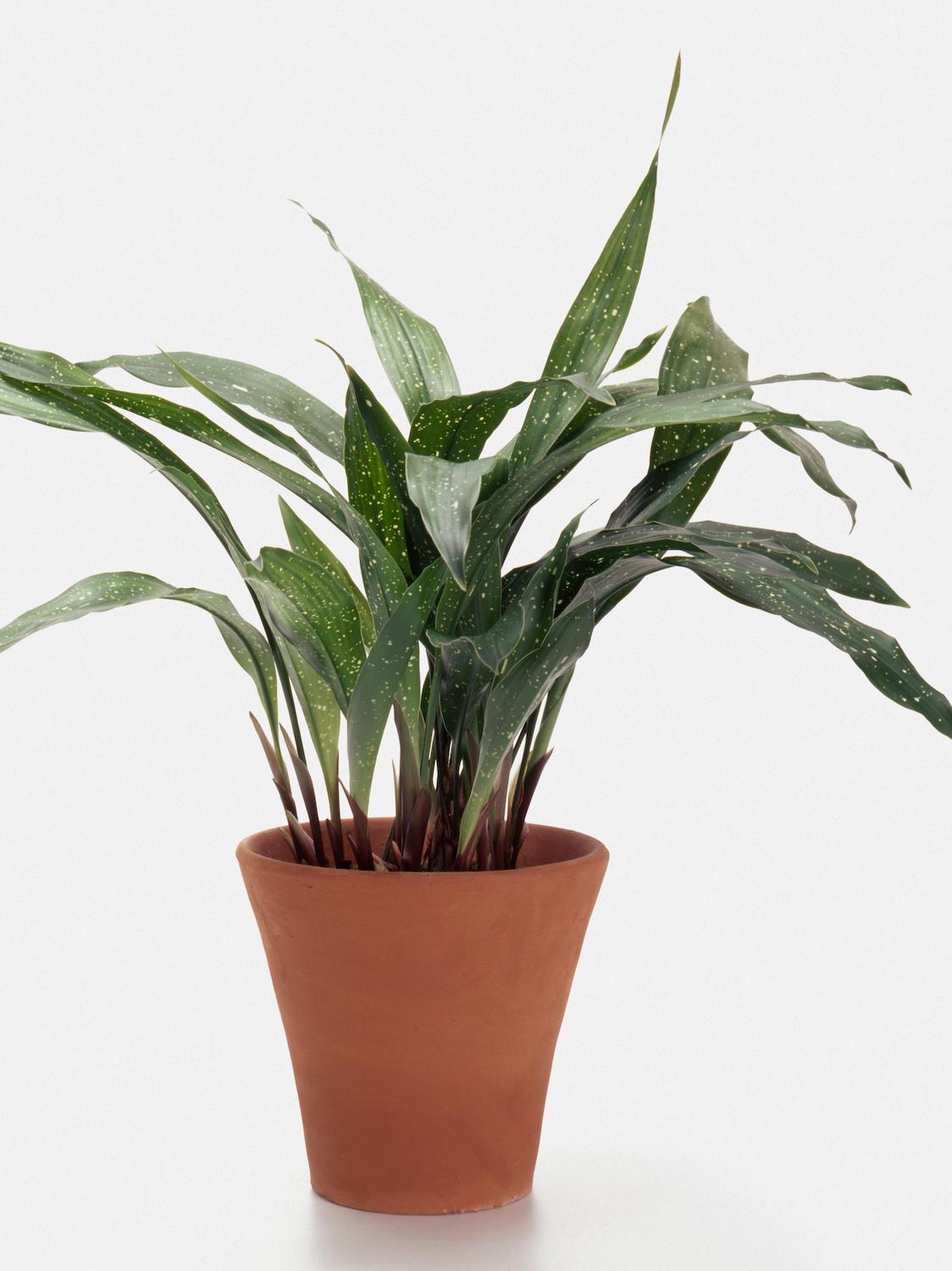
The aspidistra is a relaxing plant for the bedroom as it is tolerant of low light conditions. It also won't mind too much if you forget to water it now and then. In fact, the cast iron plant owes its nickname to its ability to survive neglect, so you can rest easy with this one.
'Cast Iron plants are the perfect low light bedroom companion,' says Bethany Latakos at Fast-Growing Trees. 'They are a no fuss houseplant that gives you all the benefits of a real, living plant with minimal care.' You often see them in indoor zen gardens, as they have an air of calm about them.
'Aspdistras reduce benzene from the air, reducing your toxin load, and increasing your well-being. Studies show that simply looking at plants can improve mood and focus and reduce blood pressure,' Bethany adds.
'To care for a Cast Iron plant, use a standard potting mix and place your plant in low light or a north facing window. Keep the soil slightly moist in spring-summer, then allow the soil to become nearly dry fall-winter, being very careful not to overwater. Though Cast Iron thrives on neglect, it will reward you with 2 feet tall, glossy leaves if watered appropriately and fertilized with a balanced houseplant fertilizer spring-early fall.'
3. English ivy
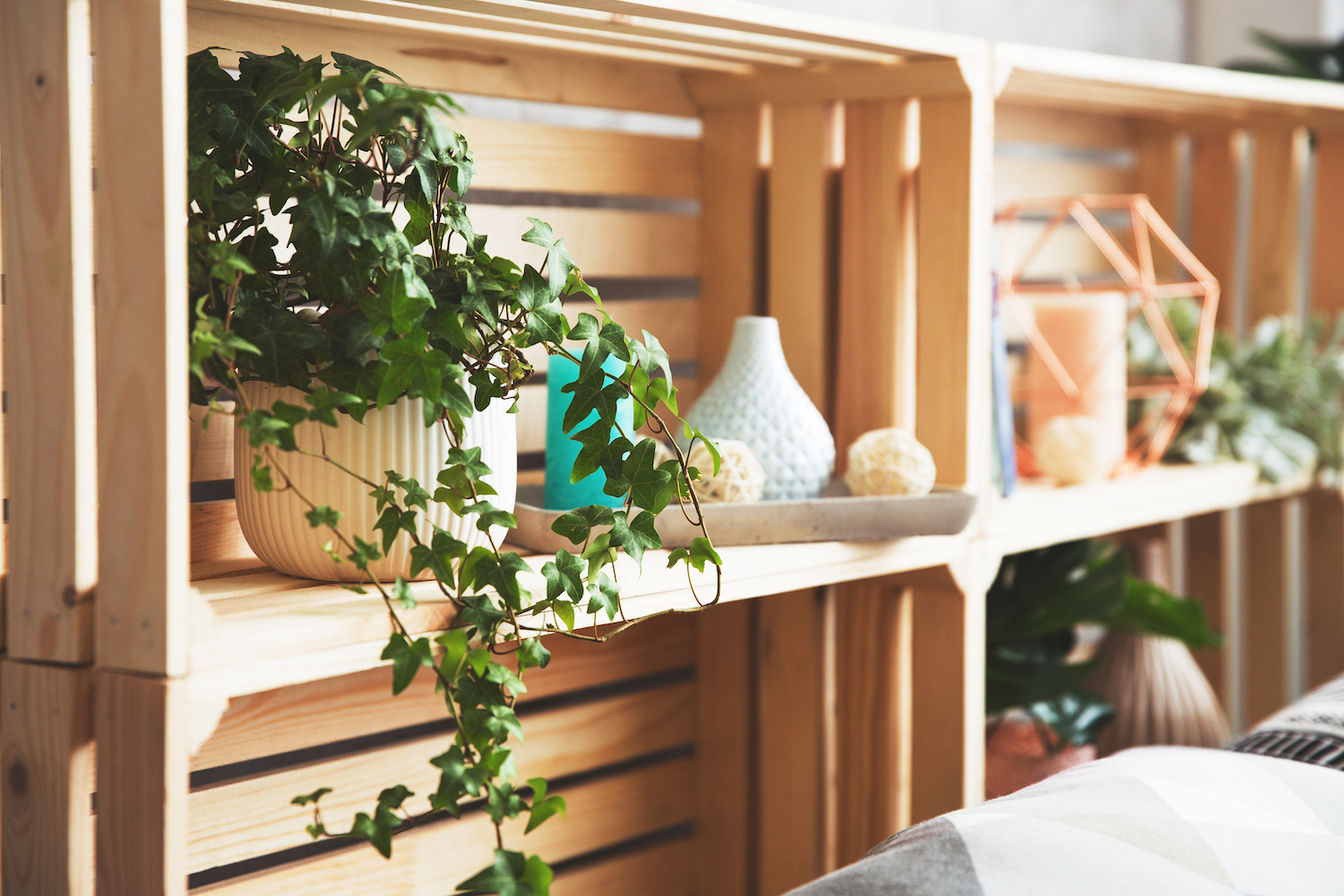
Layering a mix of tall, small, upright and trailing plants at various heights creates a beautiful balance of greenery that mimics how they tend to grow in nature.
'Consider English Ivy as a portal to the peaceful countryside,' says Bethany at Fast-Growing Trees. 'Growing English ivy outdoors can be problematic in the US, with its thick, spreading growth habit crowding out native plants, but caring for English ivy indoors is an easy, no fuss way to enjoy this vining plant.
'Researched-based evidence shows that English ivy can purify indoor air by removing harmful VOC’s like benzene and formaldehyde, which can be found in upholstery, wood products, paints, and more.
'English Ivy is a symbol of loyalty and faithfulness to a romantic partner, and is often included in wedding bouquets, making it a meaningful addition to the bedroom.
'To care for English Ivy, use a standard well-draining potting mix and place it in moderate indirect light spring-summer, transitioning to bright indirect light fall-winter.
'Water when the soil is dry about two inches down but do not allow the plant to completely dry out. Fertilize every 60 days spring-fall with a high nitrogen fertilizer to promote healthy, leafy growth.
'Place your ivy on the edge of a table, mantle, or bookshelf where the vines can gently cascade. If lower leaves become sparse, clip just above a leaf node to promote fresh, new growth.'
4. Snake plant (Sansevieria)
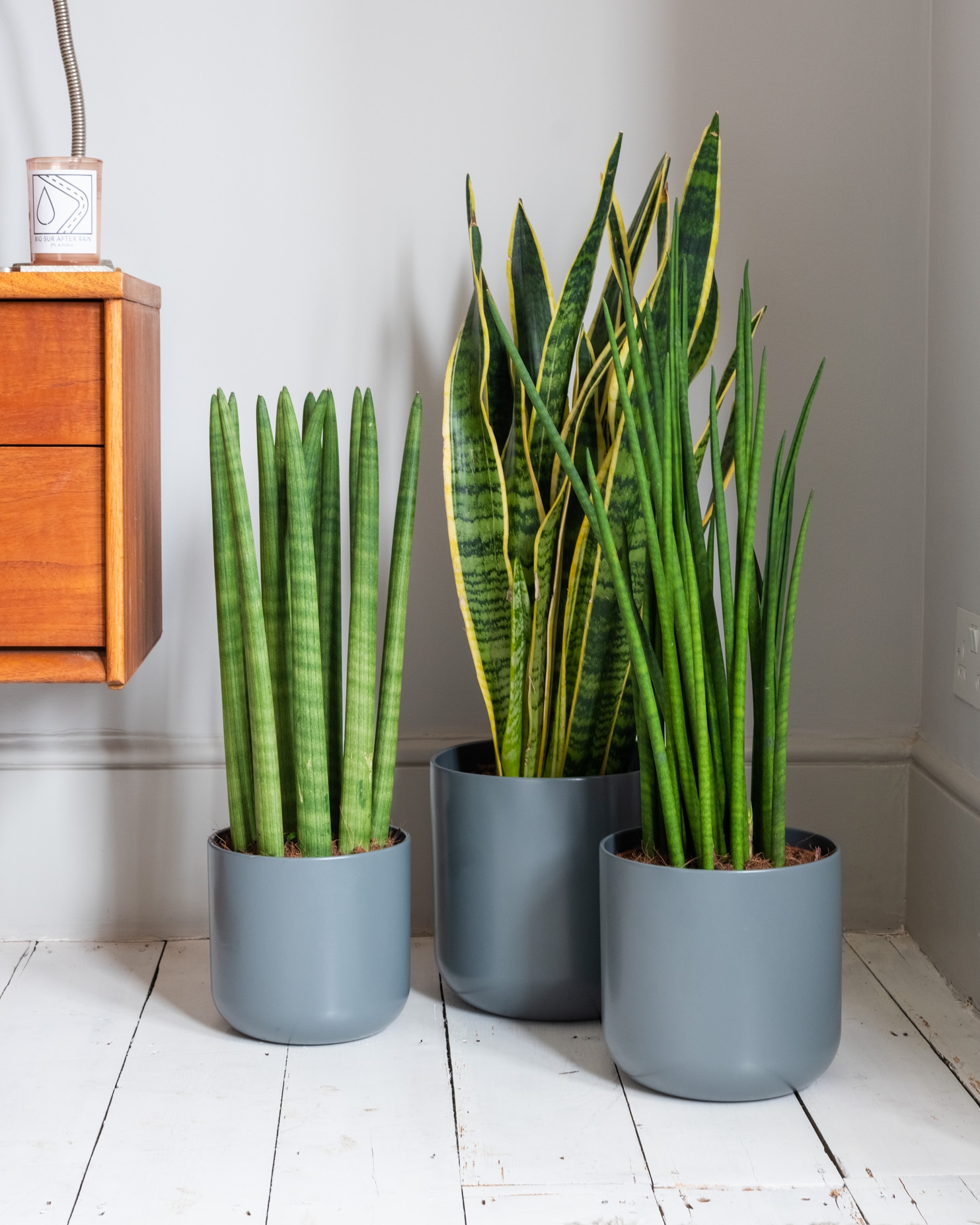
Snake plants are great for the bedroom because they are not only low maintenance but they are one of few plants that converts CO2 into oxygen at night, unlike most other houseplants. They also absorb the air-borne toxins released from new furniture, flooring, paints and varnishes.
'Sansevieria claims a spot on NASA’s list of top 10 air-purifying plants, removing volatile pollutants from the air including benzene, formaldehyde, and trichloroethylene,' says Paris Lalicata, plant expert at The Sill.
'Snake plants are versatile and suitable for a wide range of lighting including low, indirect light to afternoon direct sun. Ideally, it would be best to place your Snake plant directly in a window for efficient growth but it can tolerate being placed in lower lighting.
'Be sure to allow the soil to dry out completely before watering. This could be every one to two weeks in the spring-sSummer months or even two to three weeks in the fall-winter.'
5. Calathea
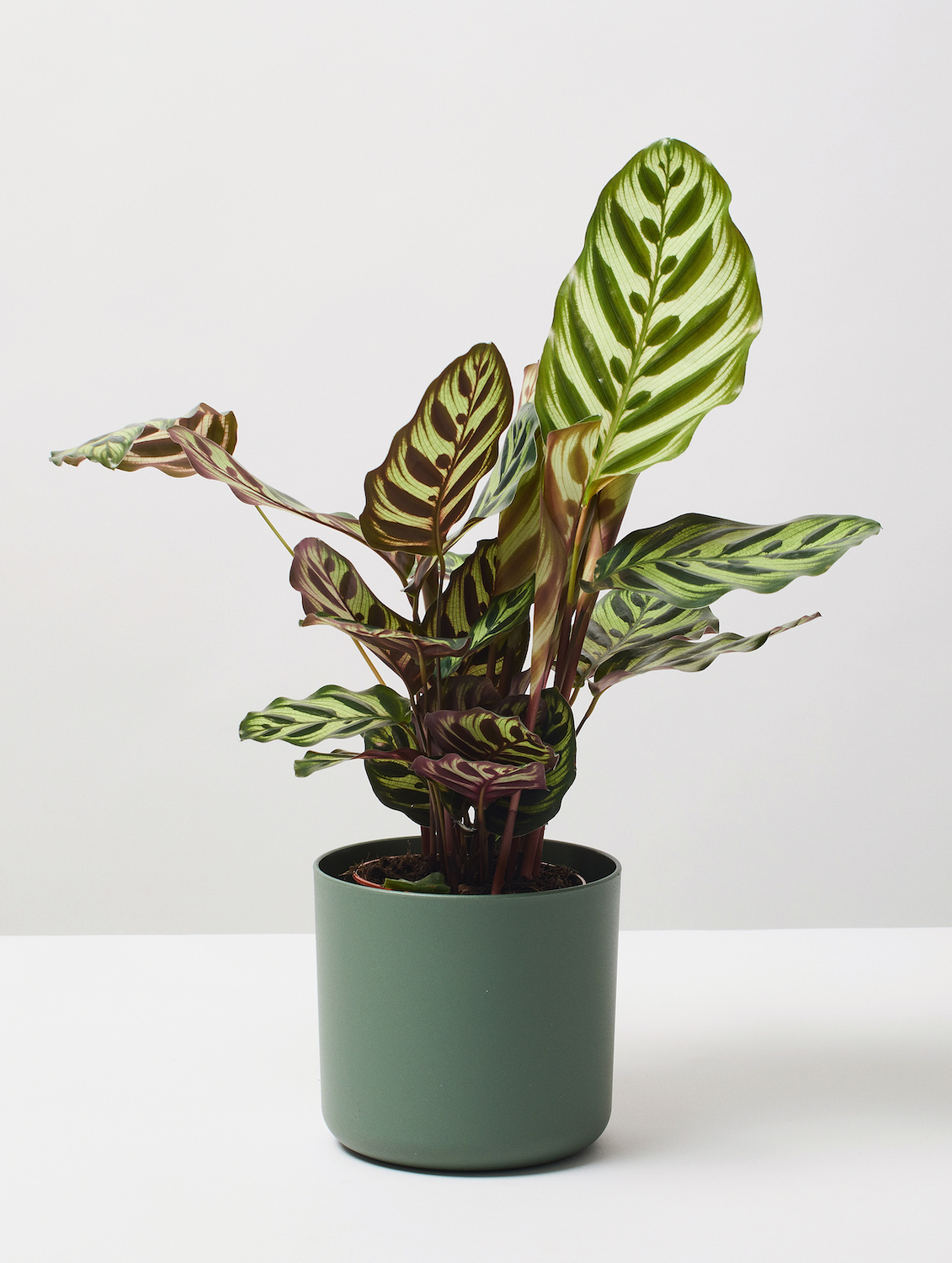
Often referred to as a 'prayer plant' due to the way its leaves move up at night, the Calathea offers a wide range of attractive species. Although each species is slightly different, and beautiful in its own way, the Calathea helps to purify the air, and its uniquely patterned, colorful foliage doubles as decor.
'Calatheas are great bedroom mates because they help to signal when it’s getting close to bedtime due to its nyctinasty movement,' says Paris Lalicata, plant expert at The Sill.
'Various plants in this family move their leaves up at nighttime and lower them in the daytime in accordance to a circadian rhythm. This is in order to maximize light absorption. As the sun sets, the leaves gradually move their leaves upward which can be a helpful indicator its time to rest.
'Calatheas thrive in medium to bright indirect light, but can tolerate low indirect light. They will thrive best in an East or unobstructed North window, but diffused West and South windows can work too.
'Water them once when about half the soil has dried out. Calathea also thrive best in conditions where humidity is consistently above 30-40% so adding a humidifier in the bedroom will not only make this plant happy, but can be beneficial to humans as well, especially in the Fall/Winter months when air tends to be drier.'
Be The First To Know
The Livingetc newsletters are your inside source for what’s shaping interiors now - and what’s next. Discover trend forecasts, smart style ideas, and curated shopping inspiration that brings design to life. Subscribe today and stay ahead of the curve.
Jacky Parker is a London-based freelance journalist and content creator, specialising in interiors, travel and food. From buying guides and real home case studies to shopping and news pages, she produces a wide range of features for national magazines and SEO content for websites
A long-time contributor to Livingetc, as a member of the team, she regularly reports on the latest trends, speaking to experts and discovering the latest tips. Jacky has also written for other publications such as Homes and Gardens, Ideal Home, Red, Grand Designs, Sunday Times Style and AD, Country Homes and Interiors and ELLE Decoration.
-
 Turns Out the Coolest New Café is Actually In Your Kitchen — Here's How to Steal the Style of TikTok's Latest Trend
Turns Out the Coolest New Café is Actually In Your Kitchen — Here's How to Steal the Style of TikTok's Latest TrendGoodbye, over-priced lattes. Hello, home-brewed coffee with friends. TikTok's 'Home Cafe' trend brings stylish cafe culture into the comfort of your own home
By Devin Toolen Published
-
 5 Bathroom Layouts That Look Dated in 2025 — Plus the Alternatives Designers Use Instead for a More Contemporary Space
5 Bathroom Layouts That Look Dated in 2025 — Plus the Alternatives Designers Use Instead for a More Contemporary SpaceFor a bathroom that feels in line with the times, avoid these layouts and be more intentional with the placement and positioning of your features and fixtures
By Lilith Hudson Published
